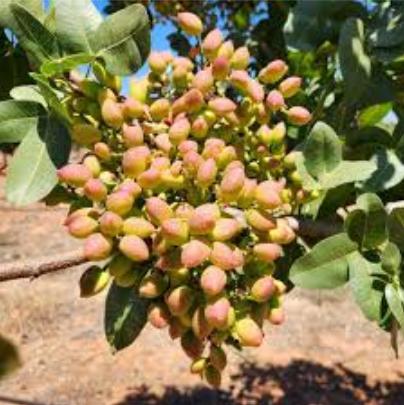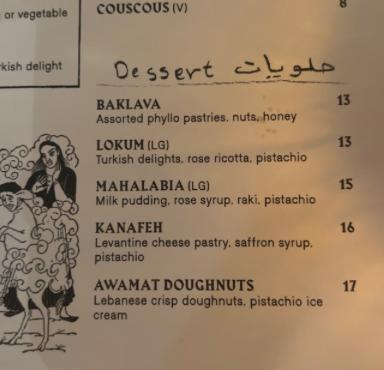
Read the Charter of Independence here.
The pistachio has held society in its green grasp since the Dubai chocolate bar became an international craze online in late 2023.
As a result, pistachio-flavoured ice-creams, spreads, chocolates, coffees and even protein powders have saturated the food industry and filled our supermarket shelves.
But at what cost? What problems has this nutty obsession caused in our society, particularly for its traditional users?
The Dubai chocolate bar hit the scene as far back as December 2023, when TikTok influencer Maria Vehera shared a video of her sampling the chocolate bar.
The bar was produced by FIX Dessert Chocolatier in the United Arab Emirates. The company coined the phrase ‘Can’t Get Knafeh of It’, a play on words of the Arab dessert that it was inspired by.
The bar itself is an indulgent chunky chocolate bar filled with a bright pistachio cream, tahini and flaky and crunchy kataifi (thinly torn phyllo pastry). The result is a chocolate bar with a luxurious edge, a product that could put other brands of chocolate to shame for its sheer simplicity. But with decadence comes equally lavish prices.
The Lindt version of the chocolate bar is sold for $20 for less than 150 grams, proving that to have what everyone raves about … one must pay the price.

Chair of the Research and Development committee at Pistachio Growers Australia Chris Joyce said there has been an increase in the price of pistachio due to growing demand.
“There has been an extraordinary escalation in price for pistachio kernels, like a 50-70 per cent price rise in the last 12 months,” he said.
He does not think it will last due to the high cost of the product.
Joyce believes this food fad will not impact Australian pistachio growers in the long term, as the cultivation of pistachios takes years. Crops only become harvestable eight to nine years after being planted.
“Let’s make the most of it whilst it lasts” he said.

Australia is relatively a trivial producer of pistachios, producing 5,000 tonnes in a world market of 700,000 tonnes.
According to the US Department of Agriculture, the United States is the world leading producer of pistachio producing 503,230 tonnes. This accounts for 43 per cent of global production. The US surpassed Iran’s dominance in the industry in 2017.
In terms of sustainability, Joyce explains that pistachio popularity has been gradually rising over the century. This growth is a mere 3 to 4 per cent increase per year, which he says is sustainable for the overall industry.
However, he said the current rate of growth of up to 50 per cent is unsustainable.
While the pistachio is a drought-resistant crop, one cannot expect farmers and the environment to match the demand that TikTok might create online.
A disappointing harvest, down 26 per cent from the US this year, combined with exorbitant global demand has inevitably caused pistachio shortages.
An inconvenient result for most individuals is that their crazed obsession is becoming increasingly expensive.
However, Middle Eastern people who have utilised the nut in cuisine and custom for thousands of years are the ones with the short end of the stick.
Owner of Middle Eastern restaurant 1001 Nights Nina Syawish uses pistachios to capture and stimulate her traditional Iraqi cuisine.

“Pistachio is very popular in Middle Eastern dish[es]. In any dish we use it as a garnish on top of the rice, biryani rice, we use it for dessert, other savouries, we mix it with the meat,” she said.
Her restaurant in Mount Eliza offers classic Baklava, along with Lokum (a traditional version of Turkish delight), Mahalabi (milk pudding), Kanafeh, and Awamat doughnuts. These meals all include pistachios.
Syawish said she has felt the strain of increased pistachio prices but due to their importance in her dishes she has been forced to bear the brunt of the price rise.
Pistachios grew traditionally in the northern, mountainous areas of the Middle East, in Iran, Turkey, Syria and Iraq. Thousands of years of cultivation have made it staple in not only cuisine but also custom.
Despite being a luxury and often expensive item, Middle Eastern people pride themselves on offering pistachios to guests as a symbol of hospitality.
According to food writer Alex Beggs in Taste magazine this year, pistachios have become a status symbol of ‘quiet luxury’.
He writes that ‘sophisticated foodies’ enjoy the rarity of the pistachio and the feeling of having something not everyone can access.
Adding such an air of prestige links to the historical roots of the pistachio. The Queen of Sheba prohibited commoners from growing the tree, reserving it purely for royalty.
This poses the question of whether our society is resorting back to a kind of culinary pretence where the latest delicacy is only available to those who can afford its exorbitant price.
A $20 chocolate bar or $12 pistachio spread (Pistachio Papi) is understandably a tall order for those battling a cost-of-living crisis.
Syawish said that without the pistachio, her food is simply not the same; the result is undeniably different.
Since the Dubai chocolate trend began, Syawish has also struggled to access kataifi pastry. This is the foundation of Kanafeh, the milk pudding dish that the Dubai chocolate was derived from.

Syawish said she was exceedingly frustrated by this. She has resorted to trying to make the pastry herself however has struggled to simulate its exact structure.
“I was so upset. I have to make it myself. I tried many things, but it didn't work because that pastry is very fine and has a machine,” she said.
But when the world latches onto recipes and ingredients, it runs the risk of unintentionally hindering ancient customs and tradition.